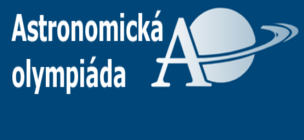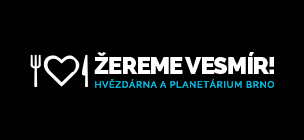Workshop | Space@BRNO#2020

Everything You Always Wanted to Know About Nanosatellites But Were Afraid to Ask. March 4, 2020, 10 - 15.00 a.m. Brno Observatory and Planetarium.
Speakers
Tomas Kohout (University of Helsinki, Finland)
Are CubeSats ready for asteroid exploration and asteroid Apophis 2029 fly-by?
Recent developments in CubeSat technology enable their deployment beyond LEO. Examples include MaRCO mission to Mars; APEX, Juventas, and LICIA projects to asteroid Didymos as part of ESA-NASA Hera-DART mission; or stand-alone M-ARGO asteroid exploration CubeSat project. In order to make these mission successful, and prepare possible follow-on mission to asteroid Apophis in 2029, specific technology requirements have to be addressed and will be discussed in the presentation.
Victor Danchev, Raycho Raychev (EnduroSat AD)
Space Data Gateway and the next generation of mission operations
EnduroSat empowers commercial and academic clients to get space data from their own satellites and shared platforms faster through a novel inter-satellite technology. Up to 50x times more data per NanoSat mission and on-demand connectivity is the future of the ground segment we are bringing to the market.
Marek Šimčák (BD SENSORS s.r.o. / CSRC Space Division)
BD SENSORS Contribution to the Czech Space Activities
The BD SENSORS Company via its CSRC Space Division that has been operating in development and manufacturing of the Space Electronics Systems became a leading and respectable representative of the Czech space industry with valuable „Space Heritage“ of more than 25 years. BD SENSORS contributed to the ESA Solar Orbiter Mission just launched in 10.2.2020 and at the present time it develops its own nano-satellite called BDSAT dedicated to the pressure sensors & supercapacitor power storage experiment
Norbert Werner (Masaryk University/MTA-ELTE Lendulet Hot Universe research group)
Democratising Space Research
Thanks to the advent of CubeSats, mass produced commercial platforms, and new launchers on the market, space is becoming increasingly more accessible also for small countries and universities. This provides new research opportunities to diversify space science which was hitherto dominated by a relatively few large projects. I will describe the current plans and trends towards a more democratic future in space research.
James Zheng (Spacety)
Commercial Space and Small Satellites in China
This presentation talks about the commercial space activities in China, the roles of cubesats, microsats, and smallsats in the Chinese commercial space. It also introduces Spacety's capabilities in small satellites, and its plan for the future.
Jakub Kapuš (Spacemanic)
Plug&Play cubesat platform to make space access easy, cheap and fast
Space market has been changing rapidly in recent years. New decade predicts a massive entry of nanosats, smallsats and satellite constellations into the field. Along with that, many small launcher providers are entering the market which brings the price of a launch down and enables new opportunities for custom orbits. Thus, space access is becoming fast, cheap and with less difficulties. With this in mind we at Spacemanic are rethinking engineering approach to cubesat development to be in line with this trend. We bet on standardisation, openness and cross compatibility as the main pillars of our work. In our presentation we want to show you our unique approach.
to be announcement…
Vladimír Dániel
Jaan Praks
Petr Kapoun
Fees and registration
The workshop is free of charge. Just register on e-mail cuzyova@hvezdarna.cz (add your name and the affiliation/organization) If you have not registered in advance, please, do so upon your arrival to the Brno Observatory and Planetarium at the registration desk.
Meals
The organizers invite you to complimentary refreshment, which includes coffee break as well as light lunch.
How to get to Brno Observatory and Planetarium
All lectures will take place at Brno Observatory and Planetarium (www.hvezdarna.cz/en).
Travelling by public transport: from the Main Railway Station in Brno take tram no. 4 in the direction of Náměstí Míru. The tram will pass through the centre of Brno, with a stop next to the so-called Red Church on Komenský square, and its final stop is close to Brno Observatory and Planetarium (Náměstí Míru). Using public transport in Brno is easy and comfortable. The trams, trolleybuses, and buses run frequently and will take you almost anywhere in Brno in the daytime as well as at night. You can buy public transport tickets at the newsagents or in yellow vending machines at major stops.
Driving: you may park your car very close to Brno Observatory and Planetarium. However, due to road reconstructions in Brno, using an up-to-date GPS navigation is recommended.
Taxi: The simplest way is to use Liftago Taxi app on your phone.
Weather
The temperature may be around 10 °C. The average relative humidity is around 60% and there are rains from time to time. You may check the weather forecast here: https://www.meteocentrum.cz/predpoved-pocasi/cz/740/brno
Sponsors
We are a pleasure to say “thank you” to all our sponsors: Jihomoravský kraj, statutární město Brno, Brno Observatory and Planetarium.






